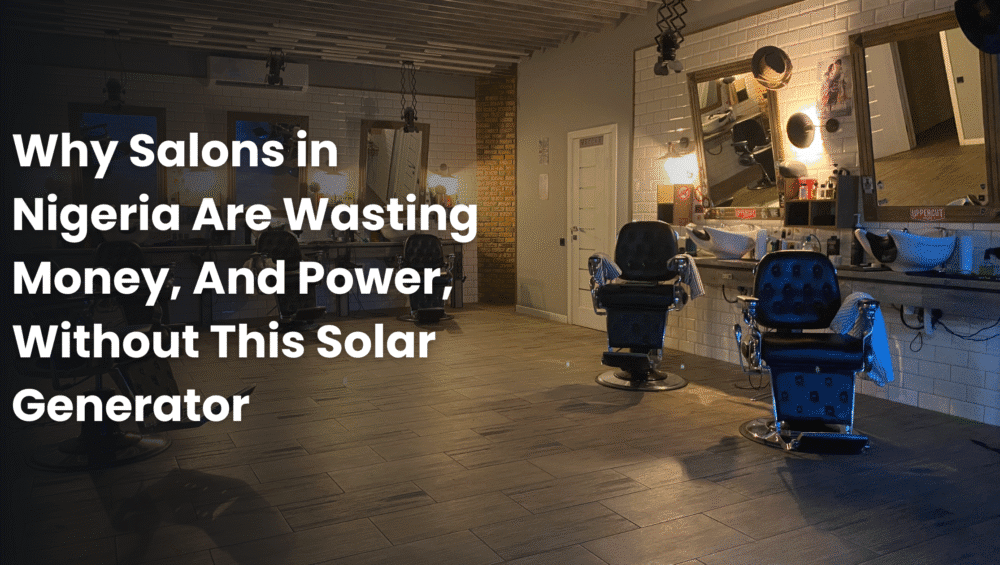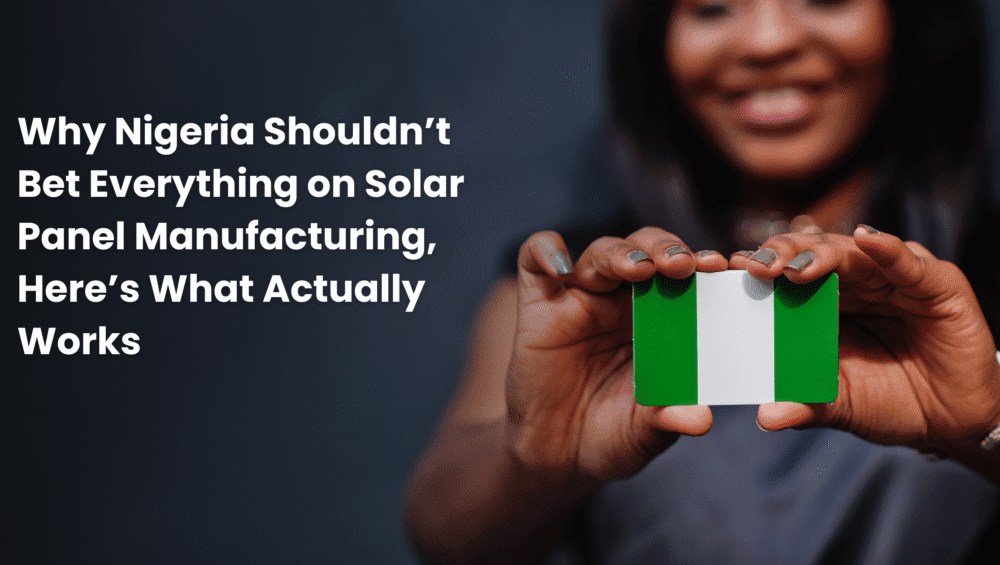You don’t need PHCN. You don’t even need fuel. You need this.
Let’s get one thing straight:
Most salons in Nigeria are burning cash.
Not because they lack customers.
Not because their prices are too low.
But because they’re spending more money on power than actual profit.
And here’s the wildest part?
Many still believe solar is only for homes or that “it can’t power a full salon.”
Let’s bust that lie, once and for all.
Yes, it’s real.
This isn’t a hypothetical “future.”
This is a salon running fully on a portable solar generator, with no noise, no smoke, no fuel queues.
The Status Quo Is Bleeding Business Owners Dry
Let’s break down the traditional setup for salons in Nigeria:
Power Source | Cost | Issues |
PHCN Light | ₦20,000–₦35,000/month | Unreliable, unexpected blackouts |
Petrol Generator | ₦30,000–₦50,000/month | Fuel hikes, repairs, noise |
Diesel Generator | ₦70,000–₦100,000/month | Overkill for most salons |
Solar? | “Too expensive”, they say | Actually… the most cost-saving |
Here’s what nobody tells you:
You’re not supposed to go fully off-grid to use solar.
You can start small, scalable, and smart, just like this salon did with our Hithium Heroee 2 Generator.
Here’s What It Powered (with 1kWh capacity):
- Hairdryer (45–60 mins)
- Hair clipper (5+ hours)
- Ring light + LED ceiling bulbs (6–8 hours)
- 32-inch TV (4+ hours)
- Rechargeable fan (all day)
- POS machine & phone charging (non-stop)
All this with no smoke, no refueling stress, and no “gen don off” embarrassment in front of clients.
Here’s the Contrarian Truth:
Solar isn’t a luxury. It’s the smartest cost-saving tool for any Nigerian small business.
The real myth is thinking solar needs ₦3 million and a rooftop full of panels.
Today’s portable solar tech (like our Hithium models) let you:
- Plug and play anywhere
- Move your power supply when you relocate shops
- Buy now and pay small small
- Scale up as your business grows
Let’s Do the Math:
Most salons spend ₦30k–₦60k monthly on power alone.
Instead, pay just ₦100k–₦150k upfront (or ₦50k deposit with BNPL) and power your daily operations for FREE after that.
In just 3 months, you’ve already recouped your investment, and then it’s all pure savings.
Still Think Solar Is Too Expensive?
Ask yourself this:
- How many clients did you cancel this month because of NEPA or fuel scarcity?
- How many new customers walk away when they hear your gen noise?
- How many referrals did you lose when the salon was too hot or the light flickered?
Now… what if that all disappears?
Real Salon Owner Testimony:
“Since switching to the Hithium Solar Generator, my staff no longer fight over who turns off the gen. We even play background music now, no interruptions. I saved ₦38,000 last month alone!”
, Tola, salon owner in Bodija, Ibadan
Bonus: Buy Now, Pay Small Small
With our BNPL plan, you can:
- Pay just 30% upfront
- Spread the rest across 1 to 6 months
- No credit score needed, just steady business
Final Thought:
Don’t wait until NEPA embarrasses you in front of your next VIP customer.
The smart salons are switching.
The rest are stuck paying fuel prices from 2019.
Be smart. Be solar. Be unstoppable.
Ready to Upgrade?
DM us on Instagram @novelsolar
Or tap here 👉🏽 www.novelsolar.com
Let’s help you power your hustle, the smart way.











